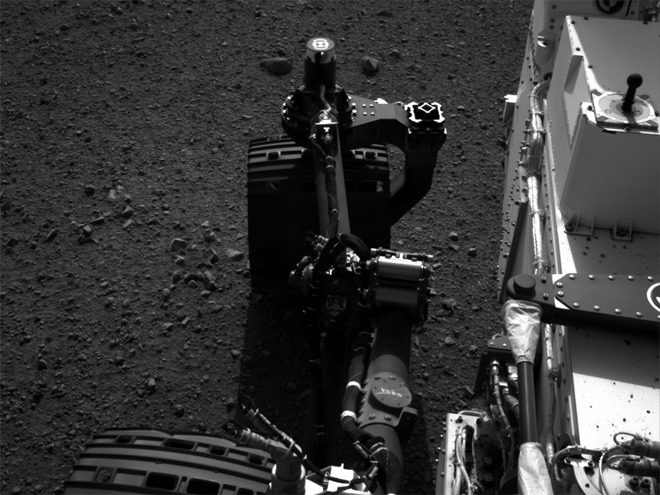NASA has reported its first setback in its Curiosity rover mission to Mars.
A sensor on the robot’s weather station that takes wind readings has sustained damage.
The mission team stresses this is not a major problem and will merely degrade some measurements – not prevent them.
It is not certain how the damage occurred but engineers suspect surface stones thrown up during Curiosity’s rocket-powered landing may have struck sensor circuits and broken the wiring.
NASA is describing the news as an isolated “disappointment” in what has otherwise been a spectacular start to the mission.
Javier Gomez-Elvira, the principal investigator on the broken instrumentation – the Rover Environmental Monitoring Station (REMS) – said he was hopeful of finding a good way to get past the issue.

“We are working to recover as much functionality as possible,” he told reporters.
Curiosity – also known as the Mars Science Laboratory, MSL – touched down in the equatorial Gale Crater two weeks ago.
It will operate on Mars for at least two Earth years, looking for evidence that the planet may once have had the conditions suitable to host microbial life.
Engineers are close to completing their programme of post-landing check-outs on Curiosity.
This has involved powering up all of the machine’s instruments, and it was during this testing that the problem was found on REMS.
The weather station is a Spanish contribution to the rover project.
It records air and ground temperature, air pressure and humidity, wind speed and direction, as well the amount of ultraviolet radiation falling on the surface.
These parameters are measured from sensors distributed around the rover, but a number are held on two finger-like mini-booms positioned halfway up the vehicle’s camera mast. This is where the wind sensors are located.
The REMS team first noticed there was something wrong when readings from the side-facing boom were being returned saturated at high and low values.
Further investigation suggested small wires exposed on the sensor circuits were open, probably severed. It is permanent damage.
No-one can say for sure how this happened, but engineers are working on the theory that grit thrown on to the rover by the descent crane’s exhaust plume cut the small wires.
The wind sensor on the forward-facing mini-boom is unaffected. With just the one sensor, it makes it difficult to fully understand wind behavior.
“It degrades our ability to detect wind speed and direction when the wind is blowing from a particular direction, but we think we can work around that,” said Curiosity’s deputy project scientist, Ashwin Vasavada.
All the other REMS measurements look good.
Air temperatures in Gale Crater have been up to about minus 2C in the Martian afternoon, and down to minus 75C in the middle of the Martian night.
In general, the rover is in rude health. On Monday, it wiggled its front and back wheels to check its steering capability.
Commands will now be sent up to initiate the first drive.
“We’re going to drive forward a few metres, turn in place about 90 degrees and then back up,” said mission manager Mike Watkins.
“We should make tracks.”
Another major engineering milestone passed this week has been the unpacking of Curiosity’s robotic arm.
It was flexed to exercise its joints. The arm holds a 30 kg tool turret on its end that includes a drill to take powered samples from rocks.
